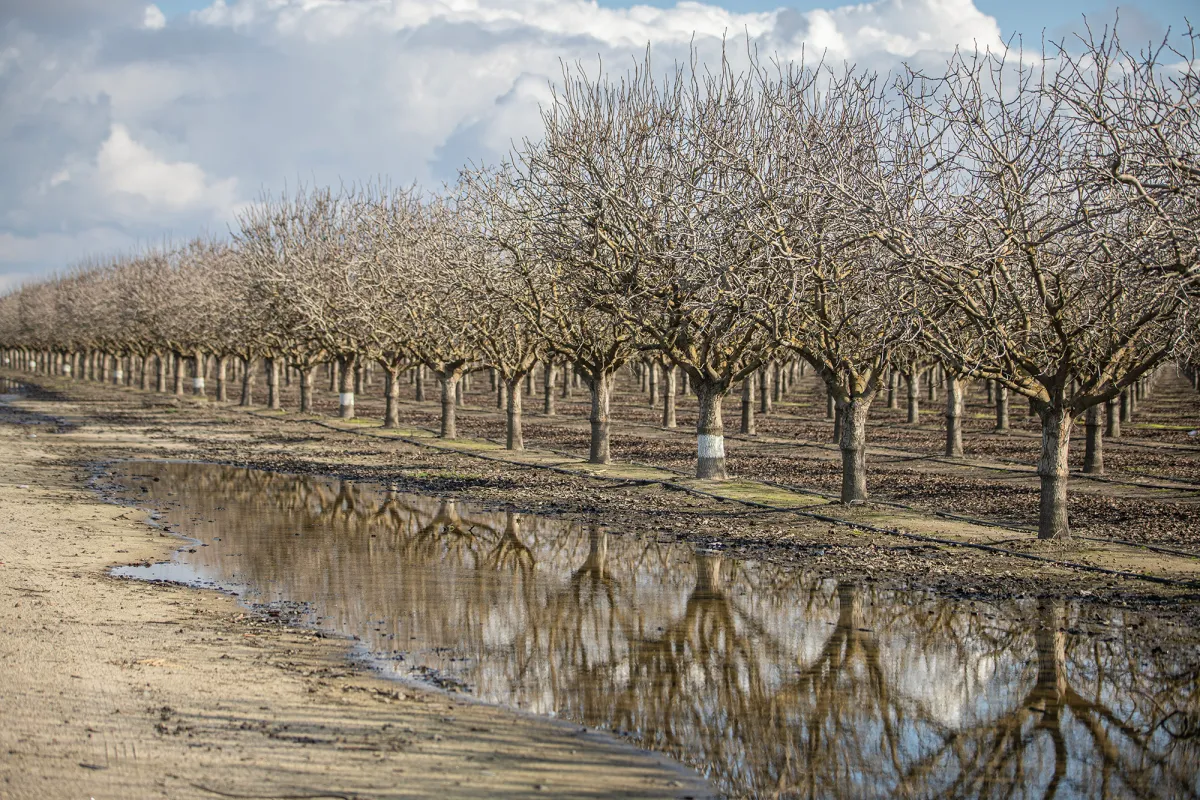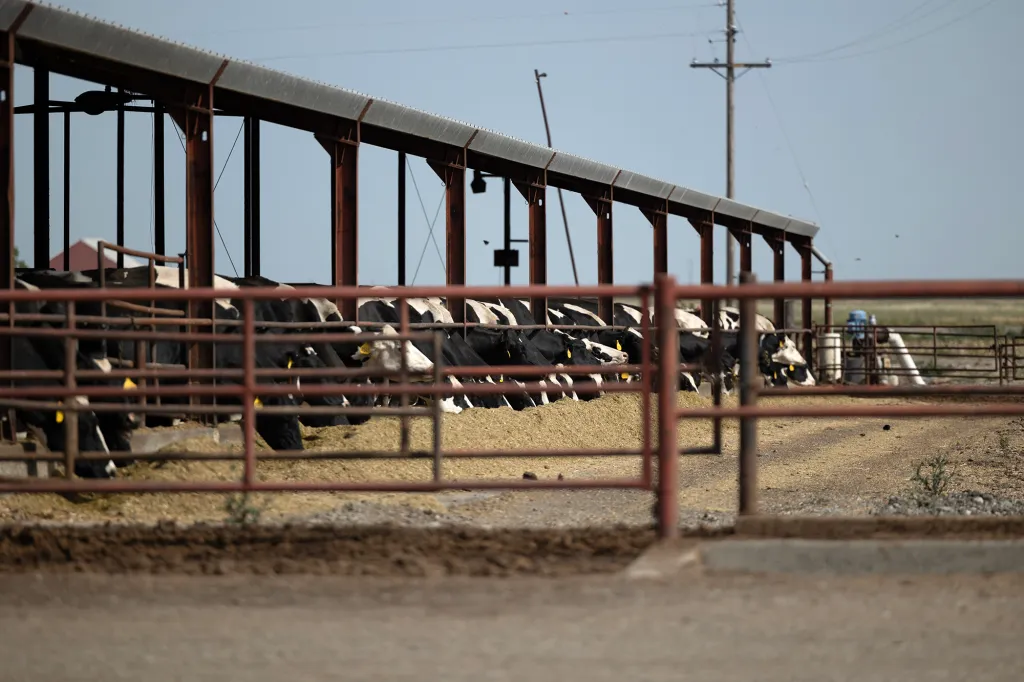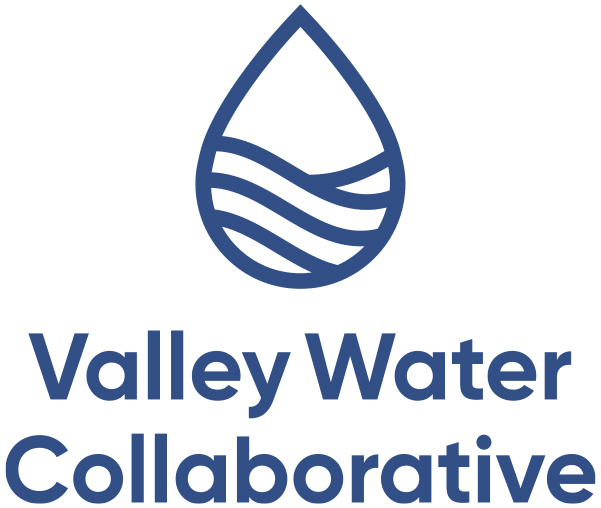Lea este artículo en español.
When Kelli and Tim Hutten made an offer for a house in the quiet Monterey County town of Moss Landing last summer, they looked forward to mild weather, coastal views, trails along nearby wetlands and being a bit closer to family. Unfortunately, the Huttens also knew that something wasn’t right with the neighborhood’s groundwater.
“We knew there were water contamination issues,” Kelli Hutten said. “During escrow we did as much research as we could, but there’s a lot to learn.”
By the time they moved in with their newborn baby, the details were clear: Their private well water contained five times the federal government’s limit for nitrate, which usually leaches from farms. The Huttens immediately signed up for delivery of drinking water, paid for by a state program, and installed a filtration system. Nitrate in water can cause a dangerous circulatory condition in infants called blue baby syndrome, and it has been linked to cancer, too.
The Huttens’ community in the Salinas Valley, one of the nation’s most productive farm areas, is just one of many towns in California plagued by nitrate contamination of drinking water. For decades, high levels have contaminated groundwater basins throughout the state — especially in disadvantaged farm communities in the San Joaquin and Salinas valleys — as well as much of the world.
Now this year’s heavy rains may worsen this widespread contamination as fertilizer from crops and orchards and manure from ranches and dairy farms are flushed into underground water supplies.
In agricultural regions, decades’ worth of fertilizers applied to orchards and row crops, and tons of cow manure stored in ponds, releases nitrogen into the ground. As much as 40% of nitrogen in fertilizer may eventually enter groundwater supplies.
Thousands of households have wells contaminated with nitrate. For public water systems, about one in every 10 water samples collected from 20,000 wells in the Tulare Lake Basin and the Salinas Valley exceeded the drinking water standard for nitrate, according to a 2012 UC Davis report to state officials. But the full scope of the problem is unknown, partly because Central Valley residents have an estimated 150,0000 private drinking water wells, which are not routinely monitored for pollutants.
More than 250,000 people served by public water systems or private wells in the Tulare basin and Salinas Valley “are currently at risk for nitrate contamination of their drinking water,” the report says.
Nationally 40% of shallow wells underlying farmland may exceed the federal standard for nitrate in drinking water.
Nitrate contamination is widespread in California
Many wells, especially in the Central Valley, Southern California and Central Coast, have nitrate levels that are contaminated with at least 4 milligrams per liter of nitrate, which comes mostly from farms. The federal standard for drinking water is 10 milligrams per liter.
4-10 MG/L Nitrate as Nitrogen 10+ MG/L Nitrate as Nitrogen
Source: Groundwater Ambient Monitoring and Assessment Database, California Water Boards
Map: John Osborn D’Agostino, CalMatters
While a popular mantra among water-quality managers declares that “dilution is the solution to pollution,” it doesn’t always work that way.
Helen Dahlke, a UC Davis professor of integrated hydrologic sciences, said stormwater percolating into the ground will flush soil nitrates into groundwater basins, causing levels to jump.
Whether the concentrations drop again soon “depends on how much clean water comes along on the back end,” she said. Flooding will probably provide enough water to dilute nitrate-tainted runoff, while groundwater basins recharged by rainfall alone are likely to remain elevated, she said.
Michael Claiborne, an attorney with the Leadership Counsel for Justice and Accountability, which works with disadvantaged communities lacking clean water, is concerned that farms now or recently flooded have been swamped by filthy water that is now percolating into groundwater basins. These farms include Central Valley parcels intentionally flooded after Gov. Gavin Newsom issued an executive order on March 10 to encourage using stormwater to recharge depleted groundwater.
“There are a lot of dairies that are completely flooded, and that includes the lagoons where they store their manure,” he said.
Other groups, including the Community Water Center and Clean Water Action, have also raised concerns that the recent flooding of lands saturated with fertilizers and pesticide residues will contaminate groundwater.
“We don’t know whether a lot of recharge on these lands will make (nitrate contamination) worse or push it out.”
Patrick Pulupa, Central Valley Regional Water Quality Control Board
Patrick Pulupa, an executive officer with the Central Valley Regional Water Quality Control Board, said it’s unknown how flooding will affect basins underlying large dairy farms.
“We don’t know whether a lot of recharge on these lands will make (nitrate contamination) worse or push it out,” he said.
In some places, floodwaters have had clear and immediate impacts on groundwater.
In February, a levee protecting the small Tulare County town of Seville breached. Water swamped many properties and overtopped several drinking water wells.
Homeowner Linda Guttierez, who also serves on the town’s water service district, poured bleach into her well to kill any pathogens that might have entered the system.
Seville often doesn’t have enough water. Last summer and again in the early winter, farmers nearly depleted the community’s wells, she said. To get by, drinking water, paid for by the state, is delivered to residents. The community of about 600 people has also received a $1 million grant to drill a new, deeper well.
Meanwhile, the heavy snow in the Sierra Nevada, visible from her yard, will soon melt, and more flooding is expected.
“Be careful what you ask for, because you just might get it, and you might get it all at once,” Guttierez said.
Water deliveries are a short-term fix
Thomas Harter, a UC Davis professor who co-authored the nitrate report for state officials, said the contamination will haunt at least another generation of Californians. That’s because the lag time between the application of fertilizer and its entry into groundwater basins can be many years, and decades more may pass before the nitrate reaches a well.
“Even if we were able to change how we manage agricultural fertilizer today, it would still take years or decades before wells actually see an improvement,” he said.
In southwest Sonoma County, a few miles west of Petaluma, the local groundwater is unsafe to drink — and the source of the issue is plainly visible. Beef and dairy cows range freely over the watersheds and creek bottoms that drain toward Bodega Bay.
Their manure festers in muddy watering holes, and for locals in and around the small town of Valley Ford, this means living on bottled water.
“Even if we were able to change how we manage agricultural fertilizer today, it would still take years or decades before wells actually see an improvement.”
Thomas Harter, UC Davis professor
Sampling of Valley Ford’s three main wells last June found nitrate at twice the federal drinking water standard of 10 milligrams per liter, and a few months earlier it was nearly triple, at 28. More recent sampling found it at almost 12, still enough to prompt a notice from the state warning residents that pregnant women and infants should not consume the water. Locals declined to discuss the issue with a CalMatters reporter.
State programs to bring safe drinking water to communities affected by nitrate are now serving at least 1,048 households in the San Joaquin Valley and about another 300 in the Central Coast region. These initiatives include the Central Valley Salinity Alternatives for Long-term Sustainability program, and the State Water Resources Control Board’s Cleanup and Abatement Account.
Kelsey Hinton, communications director for the Community Water Center, said bottled water deliveries must be provided for affected communities but said they should not be considered a long-term fix.
“It’s a short-term Band-aid solution,” she said.
Her organization advocates for projects that connect small communities to major surface water supplies or provide them with improved wells that tap into clean water — a resource that is guaranteed by state law.
“We decided as a state in 2012 that everybody deserves access to clean, affordable water,” Hinton said, referring to the Human Right to Water law.
The most well-documented health impact associated with nitrate consumption is blue baby syndrome, or methemoglobinemia, a condition in which ingested nitrates can displace blood oxygen and cause suffocation. The federal standard for nitrate in drinking water, 10 milligrams per liter, is aimed at preventing blue baby syndrome.
But even at concentrations below the blue baby threshold, nitrate may cause ovarian cancer, according to 2015 research from the National Institutes of Health. Another study produced a similar conclusion for pregnant women and preterm births. Nitrate also has been linked to bladder cancer, thyroid cancer and non-Hodgkin’s lymphoma.
Awash in nitrogen from farms
If California’s historic winter successfully dilutes nitrate in some groundwater basins, these gains are likely to be lost to continued fertilizer use, future drought and groundwater overdraft, which can concentrate impurities in the water.
Nitrate is “the most ubiquitous pollutant of groundwater resources,” UC Davis researchers reported in 2014, and it “is becoming more acute and is affecting larger areas and more people.”
Nitrate loading in groundwater “presents a significant threat to human health as pollution gets substantially worse each year,” the Central Coast Water Quality Control Board warned in 2017.
Synthetic fertilizers used for fruit trees and row crops are the biggest source of groundwater nitrate contamination, contributing nearly 60% of the problem in California, according to a 2017 report commissioned by the California Department of Food and Agriculture. Dairy production is responsible for about 20%.
Harter of UC Davis calculated that nearly 1 million tons of nitrogen are applied to farmland in the Central Valley alone every year. Roughly half is removed via harvest of crops, while some escapes into the atmosphere. That leaves an estimated 360,000 tons to percolate into the ground.
In the Salinas Valley alone, tens of millions of pounds of nitrate enter groundwater basins every year from farms, according to a 2017 state estimate.
Fruit trees and row crops are the biggest source of groundwater nitrate contamination in California.
Harter said farmers must “reduce the application of nitrogen” but that many err toward overfertilizing when calculating the nitrogen needs of their plants.
That may be changing. Parry Klassen, a peach and watermelon farmer near Reedley and executive director of a nitrate management organization called the Valley Water Collaborative, said farmers are paying closer attention to the nitrate needs of their plants and how much they apply.
Klassen said the days of gross fertilizer overloading are over, due in part to skyrocketing fertilizer costs — an economic outturn of the war in Ukraine. “The finetuning is what we’re working on now,” he said.
A state program now 20 years old seeks to improve nitrate management on farms and reduce loading into soil and groundwater. Updated in 2012 to specifically address groundwater, the Irrigated Lands Regulatory Program requires all Central Valley farmers to report nitrogen application and crop harvest.
The idea is to create an accurate nitrogen accounting system that tells state officials exactly how much nitrogen is threatening drinking water supplies, said Sue McConnell, who manages the program for the Central Valley Regional Water Quality Control Board.
About 25,000 farmers are now enrolled and submitting reports of the data, though clear trends in fertilizer use are not detectable.
For farmers, applying exactly what a plant needs is a difficult task, according to several sources. Klassen said changes in the weather or other conditions can reduce a plant’s vigor and productivity during the growing season, causing it to uptake less nitrogen and leaving unused nitrogen in the soil.
Even under-fertilizing doesn’t necessarily work. It can stress plants, causing them to shut down and stop absorbing nitrogen.
“And then you’re still overfertilizing,” said Harter of UC Davis.
Harter said California’s farmers have overall been improving — though not perfecting — their fertilizer efficiency in the past several decades.
But, he added that the explosion of California’s dairy industry late last century has offset those advances. “It’s created a huge manure surplus that the dairy industry is trying to deal with,” Harter said.




